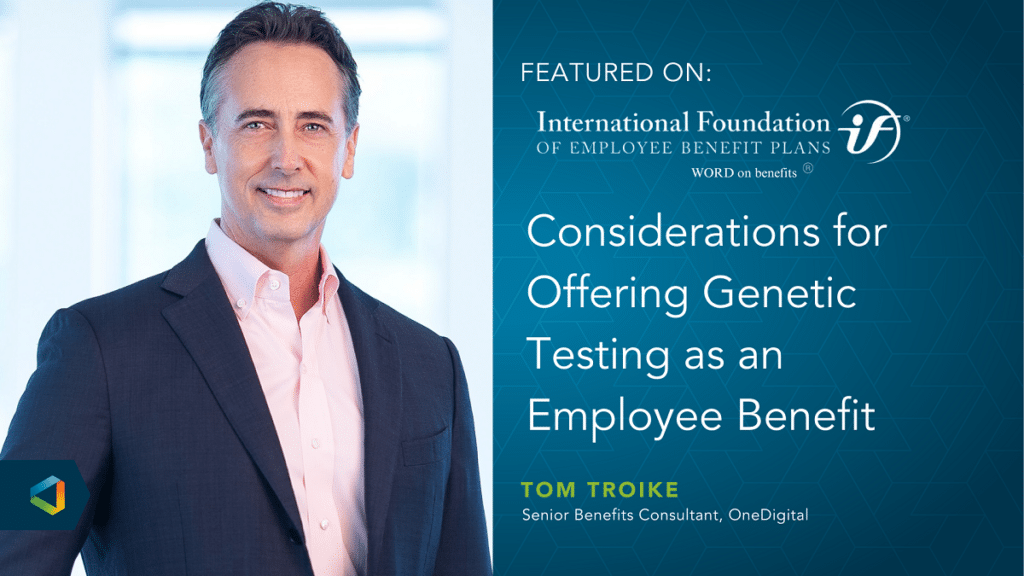Better Benefits, Healthy People
5 Excellent Benefits to Offer Employees in 2024
5 Excellent Benefits to Offer Employees in 2024
In an era of perpetual labor shortages, employee benefit offerings can be a critical factor in attracting and retaining top talent.
With the competition for talent remaining fierce in 2024, here are five innovative benefits trends that can act as powerful differentiators for companies that want to maintain an edge in recruiting and retention:
-
100% health plans
It's no secret that American healthcare costs have risen dramatically in the last several years, with half of all adults saying that expensive healthcare is a top worry and significant financial burden. To alleviate these negative outcomes and attract scarce talent, more companies have decided to pay 100% of monthly healthcare premiums for their employees. The decision to embrace 100% coverage of premiums, rather than the national average of 83%, can be an incredible differentiator in the eyes of candidates who are shopping around between multiple potential employers. Currently, this practice is more common in smaller firms than in larger ones, with 29% of the former and only 5% of the latter offering full premium coverage.
However, the tight labor market of the 2020s appears to be changing this equation, with many larger firms beginning to embrace 100% health plans. Although this can be a fairly expensive proposition, many think it is ultimately good for their bottom line because it boosts both the physical and mental wellbeing of employees, increases engagement and productivity, and improves recruitment and retention.
Here are some key questions that employers may want to ask themselves when considering a 100% paid health plan:
- Will the company pay 100% for employee-only coverage, or extend this to spouses and dependents as well? It’s more common to see employers cover 100% of premiums for employee only, with other plan participants needing to buy up.
- What about other aspects of a 100% plan design? While paying no premiums looks good on its own, shifting costs to employees through increased deductibles and out-of-pocket maximums can undercut actual savings for plan users who think they are getting a good bargain.
- How does the cost for a 100% plan compared to hiring a new employee? According to the 2021 Kaiser Family Foundation Employer Health Benefits Survey, the standard company-provided health care policy totaled about $7,739 for single coverage and $22,221 for family coverage. According to SHRM, the cost to attract, hire, and onboard a new employee averages $4,129. Depending on industry specifics and the severity of one’s turnover problem, paying 100% of premiums may or may not make financial sense.
-
Expanded Voluntary Benefits
You can please some of the people some of the time, but you can’t please all of the people all of the time – unless you embrace voluntary benefits, that is. Voluntary benefits, also called supplemental benefits, refer to optional perks that are offered to employees at a discounted group rate which their employer has negotiated with providers. While employees still need to pay to use these benefits, the amount is typically far less than it would be without company subsidies.
These types of benefits give employees the chance to customize their benefits packages to best suit their particular needs. Whether it’s affordable veterinary insurance for pet owners, subsidized pre-K childcare for new parents, or even discounted food delivery for the culinarily-challenged, offering these types of policies can directly improve the quality of life of eligible employees who choose to take advantage. Offerings like these can play a crucial important role in recruitment and retention strategies, with the 2022 MetLife Employee Benefit Trends study finding that 73% of employee respondents would stay at their current employer longer if they had a wider selection of benefits.
-
Holistic Leave for Caregivers
Since the covid-19 pandemic abruptly normalized remote work for millions of American employees, those caring for young children or elderly relatives have been particularly reluctant to work in positions that do not offer them the flexibility to tend to these important family obligations. The truth is that conventional employment models are simply not conducive to people with these types of responsibilities. Because of this, hundreds of thousands of caregivers, particularly young mothers, have chosen to leave the labor force entirely rather than putting up with unnecessary commutes, rigid schedules, and stingy leave policies. The post-covd era has proven that in-person employment and the conventional 40-hour work week are not necessarily required to build high-performing teams, and companies worried about recruitment and retention have taken note.
The best way to satisfy this highly-skilled demographic of workers is to offer holistic leave and flexibility policies that don’t make them choose between being good caretakers and good employees. Competitive companies are getting ahead of the curve by offering unlimited PTO, build-your-own-schedule provisions, reduced hours for those with young children, and sabbaticals for tenured employees. Studies have found that being aggressive and experimental in this area is a great way to attract and retain talented workers who desire more agency in how they spend their days. For example, the LinkedIn 2022 Global Talent Trends Survey found that employees who are satisfied with their companies’ time and location flexibility are 2.6 times more likely to report being happy and 2.1 times more likely to recommend their employer to others.
-
A Scientific Approach to Benefits
Providing a solid benefits package is a great way to increase retention, boost recruitment efforts, and show employees that they are valued. According to a study by Dutch consulting firm Randstad, 42% of employees said they were considering leaving their current jobs because of inadequate benefits packages, while 55% had left jobs in the past because they found better benefits or perks elsewhere. As an employer, it’s smart to know exactly what both existing employees and potential hires want in regard to employee benefits. Because of this, data-driven benefits offerings are becoming more prevalent in the era of the Great Resignation, with both internal employee surveys and external expertise being leveraged to improve offerings.
When it comes to the former, conducting regular surveys is the most effective way to determine whether employees feel that their wants and needs are being adequately addressed by current benefit offerings. In this regard, less can be more – consider adopting frequent pulse surveys with only a few questions rather than annual surveys that are 20 pages long. This sort of continuous employee listening strategy is an excellent tool for measuring satisfaction and collecting feedback that can be publicly addressed in real time. According to Qualtrics, this type of responsive action can make employees up to twelve times more likely to recommend their employer to others. By enacting a benefits strategy that’s anchored in a scientific approach, employers can align offerings with larger business goals and maximize the impact of their benefits spend.
-
Personalization and Malleability
The American workforce is currently home to five distinct generations working shoulder-to-shoulder. These different age cohorts have different needs, and it is difficult for a traditional benefits plan to give adequate attention and resources to everyone. This dynamic can push employees to decline offerings they personally do not want or need, which can effectively result in them forfeiting substantial monetary resources.
For example, a generous 401k matching scheme may not be as valuable to recent college graduates bogged down with student loans. Or alternatively, a Gen X employee may choose to decline healthcare coverage because their spouse has a richer plan, resulting in the company spending much less on their benefits than for most other employees.
To combat this uneven distribution of benefits resources (and perhaps unintentionally ageist outcomes), employers may find it helpful to reconceptualize benefits as a malleable pool of resources that individual employees may allocate according to their specific needs. If a doctorate-holding baby boomer is unlikely to take advantage a company policy that reimburses the cost of higher education, let them reallocate those dollars to attending an industry conference that piques their interest. If an employee has a few more years of coverage under their parent’s health insurance plan but is struggling to afford veterinarian bills, allow them to take the cost of their unused health benefits and apply it to caring for their furry friend. This personalized approach to benefits can effectively foster more equitable outcomes, boost employee morale, and broadcast a positive corporate culture.
For more pieces of the employee benefits puzzle to consider, read: 6 Important Questions To Ask When Evaluating Your Benefits Broker Relationship.




